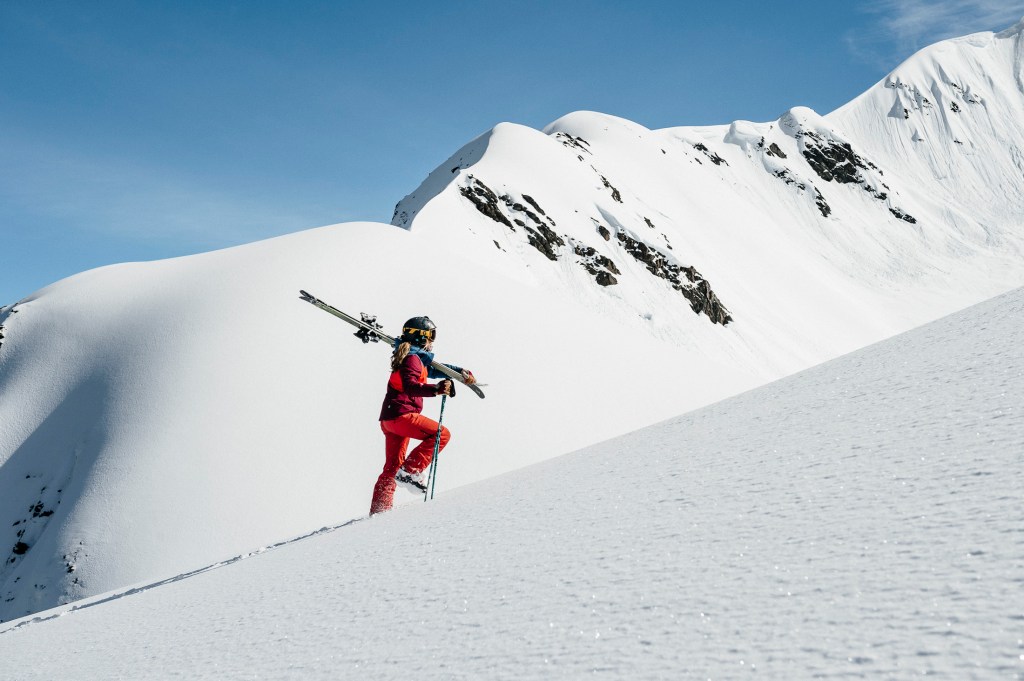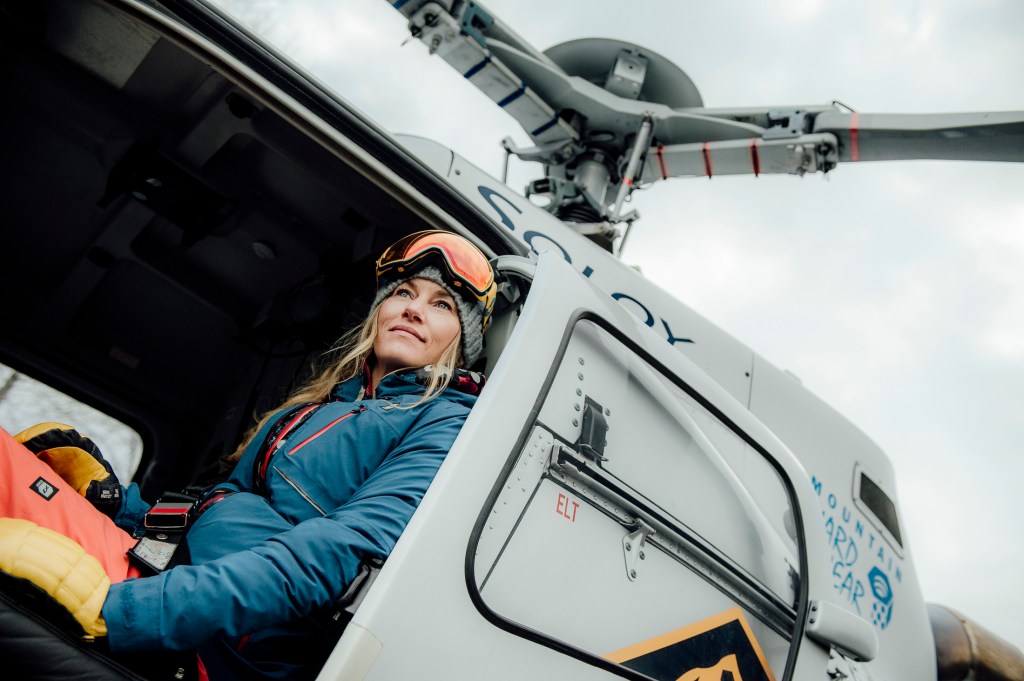Seven years ago today, Elyse Saugstad nearly died. The massive avalanche that ripped on the out-of-bounds backside of Stevens Pass ski area, in Washington, killed three other people. Saugstad was among the four skiers swept away by the slide, but she miraculously ended up on the surface, while those killed were buried some six feet down. Just her face and pink mittens stuck out of the snow, barely visible to rescuers. Cementlike avalanche debris entombed the rest of her body.
Saugstad was wearing an avalanche airbag backpack, which is designed to help keep skiers afloat in case of a slide. After the avalanche, she appeared on TV and told newspaper reporters that her backpack saved her life. The sales of airbag backpacks reportedly spiked for a period after that.
I was there the day of the avalanche, Feb. 19, 2012, skiing with a group that included Saugstad and around a dozen others, many of whom worked in the ski industry. After the mountain let loose, after the death of three of our friends, Saugstad crashed at my house in Seattle for days, recovering, grieving, crying. We sat vigil around my kitchen table, trying to figure out what happened and how to process it. I wasn’t sure I’d ever ski in the backcountry again, but Saugstad—already a well-known pro big-mountain skier at the time—had to get back into the field for her job.
I remember her fierceness even then, in the aftermath of tragedy. A bold determination, an unfettered strength of character. She was in mourning, certainly, and she would change her entire approach to navigating avalanche terrain and group dynamics after that, but she wasn’t going to let this—or anything, for that matter—stop her from from what she loved to do: ski.
“I’m a professional skier and I wanted to keep working,” she told me. “I thought that the longer I stayed away from mountains, the more likely I would be to develop a fear. The other reason I started skiing again is because the people who were the most supportive were my mountain friends, my ski buddies. When I look in hindsight, I’m surprised that I was so intent on skiing because of all of the weight of what was going on, but that was the way I dealt with it.”

Saugstad is known for being one of the hardest working athletes in the ski industry. (Photo Credit: Tal Roberts)
Saugstad grew up a hardy third-generation Alaskan in the town of Girdwood, near the slopes of Alyeska ski resort. Her dad worked construction; her mom was an electrician. When she was 7, she entered her first ski race, where she beat out all the other competition. She became an elite ski racer and figure skater in her teens, but by the time she reached college, she had burned out on both.
She studied international relations at the University of Nevada in Reno and planned to attend law school. After graduating college in 2002, she moved to Squaw Valley, California, to be closer to the mountains and friends and study for the law school entrance exam. That winter, she worked as a waitress by night, skied during the day and started dating pro freeskier Cody Townsend, a Salomon-sponsored athlete. (The two married in 2011.)
At a Salomon sales meeting in Utah in 2004, Saugstad tagged along with Townsend. While out skiing, Salomon’s head of marketing spotted Saugstad charging down the hill with her signature fluid, high-speed style and said, “Who is that?” Saugstad joined Salomon’s team not long after. Law school would have to wait.
“I decided if I’m going to try to be a pro skier, I’m going to prove myself by competing,” she said. So in 2007, Saugstad entered the Freeskiing World Tour, a big-mountain competition circuit in the U.S., where she placed second overall her rookie season. In 2008, she won the overall title on the European-centric Freeride World Tour. That year, she shot her first film segment while heli-skiing in Haines, Alaska, with Rage Films.
But big-time film segments from major ski movie companies like Teton Gravity Research (TGR) and Matchstick Productions (MSP) were hard to come by, according to Saugstad, and at that time, creating your own clips using a GoPro camera and uploading it to YouTube was barely a thing. “I was hoping the big ski films would make room for another woman, since there weren’t many other ways to put your name out there,” Saugstad said. “But basically, I was told, ‘We’ve already got our female, we’re good.’”
In the winter of 2012/2013, TGR debuted an open-source contest called The Co-Lab, where users submitted videos for a grand prize of $100,000 and the chance to appear in the company’s annual ski movie. Saugstad had a bunch of footage saved up and thought, why not? “I figured if I enter it, who cares if I don’t win? I’d just enter and ultimately, I could get my content out there, which is all I wanted,” she said. She ended up ranking in the top five—the highest placing woman—and her self-produced video earned her a Best Female Performance at the annual Powder Awards that year.
“When I was younger, coming from that time period when the only way to really make it as a pro skier was to get in one of the big movies, because there were so few outlets to get your skiing out in the world to share with people, that became a real focus point,” she said. “But after a while, things started to change. I got to a point, where I was like, I don’t really need to work with them. How good a skier I was wasn’t defined by whether or not I was included in one of the big two production companies. When I finally didn’t care anymore, I got a phone call from both.”
Last winter, Saugstad starred in both TGR’s Far Out and MSP’s All In—rarely have top skiers garnered appearances in both films in the same year. For her segment in All In, she won another Best Female Performance at the Powder Awards.
“Elyse is best known for being one of the hardest charging big-mountain skiers out there. She’s known for going big, stomping and charging big Alaskan lines,” said pro skier Jackie Paaso, a longtime friend of Saugstad’s. “Elyse is also known as one of the hardest working athletes—male or female—in the ski industry. She knows more than anyone that if you want something you can’t just sit around and wait for it to happen. You have to make it happen yourself. That is exactly what Elyse has done over the years.”
Saugstad turned 40 in September 2018, and it is not an exaggeration to say she’s currently having the best year of her career. In addition to her ski film appearances and accolades, she was recently named Freeskier magazine’s Female Skier of the Year for 2018. Although she’s lobbied for equal pay as the top male skiers from her previous sponsors for many years (to varying degrees of success), she recently negotiated a pay raise from her sponsor Blizzard Skis, and she now makes as much as the brand’s top male athletes.
“The system is changing,” Saugstad said. “There are so many athletes over the age of 35 across sports—look at Serena Williams, Roger Federer, Tom Brady, Drew Brees, Kelly Slater. You’d never say, ‘they’re good for their age.’ They’re just good. Period.”
Adds Paaso: “I think we’re in a new era of big-mountain skiing where athletes can see longevity like this. I remember when I first entered my 30s, another female pro skier told me that most women were done skiing professionally when they entered their 30s. I’m about to turn 37, Elyse is 40, and I know that we both feel like our skiing gets better every year.”
A few weeks ago, Saugstad and I went out for a day of skiing at Squaw Valley, near where she lives in Tahoe City, California. As we lapped steep chutes down the area’s Granite Chief zone, I watched as Saugstad shot down the mountain, cutting through the snow with a strong and effortless grace. She managed to make the hardest lines look plain easy.
“It’s incredibly physically demanding to be on the progressive side of this sport,” she told me. “But if you can keep sticking with it mentally and taking good care of yourself physically, then you can keep doing it for a long time. That’s how I do it. It’s just about creating that mental space for yourself.”

Saugstad gets ready to take flight in Alaska. (Photo Credit: Tal Roberts)
After the 2012 avalanche, Saugstad teamed up with fellow pro skiers Ingrid Backstrom, Michelle Parker, Paaso, and guide and avalanche instructor Lel Tone to create SAFE AS, a backcountry safety clinic for women with stops in Squaw Valley, Stevens Pass and elsewhere. The first one launched in December 2012 and their yearly clinics, which often sell out, now educate all genders.
“Elyse has been in the ski industry for a long time. She’s one of the top female skiers out there,” said Joe Sipe, freeride team manager for Blizzard and Tecnica, two of Saugstad’s sponsors. “She’s also giving back to the ski community. She’s working beyond just shooting big movie parts. She’s actually going out and educating skiers.”
Saugstad said she will never forget the avalanche or the skiers who died that day—she thinks of them regularly—but when Feb. 19 comes around each year, she always pauses to reflect.
“I take a moment to think about the people we lost and how special they were. Those guys are definitely not forgotten. It’s a big part of why SAFE AS even came to be,” she said. “Personally, I realized where I was making mistakes in my approach to skiing the backcountry. Now, I’m much more methodical. I survived a fatal avalanche once and I don’t want to be a part of that again.”
